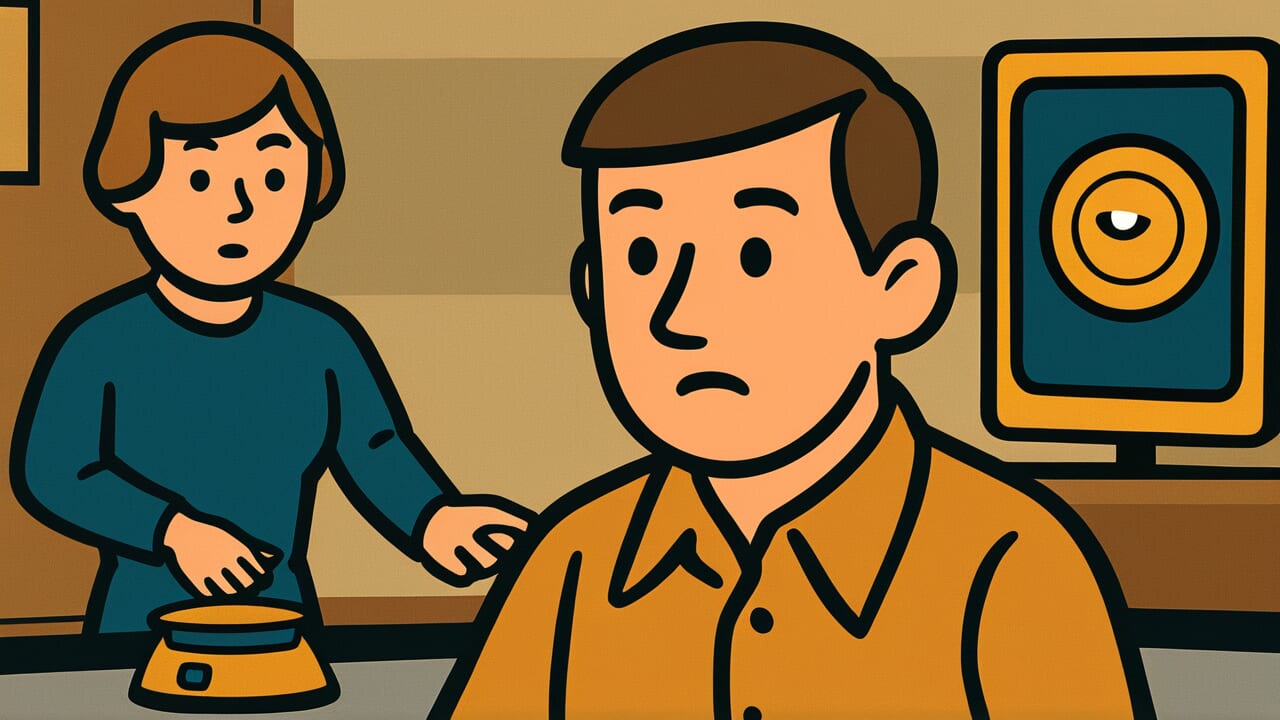How to Read “There is a difference between staring and seeing”
There is a difference between staring and seeing
[THAIR iz uh DIF-er-uhns bi-TWEEN STAIR-ing and SEE-ing]
All words use common pronunciation.
Meaning of “There is a difference between staring and seeing”
Simply put, this proverb means that looking at something is not the same as truly understanding it.
The literal words contrast two ways of using our eyes. Staring suggests looking without purpose or understanding. Seeing implies awareness and comprehension. The proverb teaches that observation alone does not create knowledge. Real understanding requires mental engagement with what we observe.
We use this wisdom when someone misses obvious details despite looking directly at them. A student might stare at math problems without grasping the concepts. A person might look at their friend’s face but miss signs of sadness. Parents often stare at messy rooms but fail to see why their children feel overwhelmed.
This saying reveals something interesting about human attention. Our eyes can focus on something while our minds wander elsewhere. True seeing requires both physical sight and mental presence. Many people go through life staring at the world around them without really absorbing what they observe.
Origin and Etymology
The exact origin of this specific phrasing is unknown. However, the concept appears in various forms throughout recorded history. Ancient philosophers often discussed the difference between mere observation and true understanding.
This type of wisdom emerged during times when careful observation meant survival. Hunters needed to see animal tracks, not just stare at the ground. Farmers had to recognize subtle changes in weather patterns. Healers learned to observe symptoms that others might miss. The ability to truly see, rather than just look, determined success in many areas of life.
The saying spread through oral tradition and written works about perception and awareness. Different cultures developed similar expressions about the gap between looking and understanding. Over time, the phrase evolved to address modern situations where people have information but lack comprehension.
Interesting Facts
The word “stare” comes from Old English meaning “to be rigid” or “to gaze fixedly.” This suggests looking without movement or change in understanding. The word “seeing” derives from a root meaning “to follow” or “to perceive,” implying active mental engagement. The contrast between these word origins reinforces the proverb’s message about passive versus active observation.
Usage Examples
- Art teacher to student: “You’ve been looking at this painting for ten minutes but missing all the symbolism – there is a difference between staring and seeing.”
- Detective to partner: “The witness was right there during the robbery but can’t describe the suspect – there is a difference between staring and seeing.”
Universal Wisdom
This proverb touches on a fundamental limitation of human consciousness. Our brains process enormous amounts of visual information every second, but most of it never reaches our awareness. We evolved to filter out details that seem unimportant for immediate survival. This filtering system helped our ancestors focus on threats and opportunities while ignoring background noise.
The gap between staring and seeing reveals how our attention works. When we stare, our eyes collect data but our minds remain passive. True seeing requires effort and intention. It demands that we connect new observations with existing knowledge. This process takes mental energy, which explains why people often default to passive staring instead of active seeing.
Modern life amplifies this ancient challenge. We encounter more visual information than ever before, from screens to advertisements to complex environments. Our filtering systems become overwhelmed, causing us to miss important details even when looking directly at them. The wisdom reminds us that quantity of observation does not equal quality of understanding. Conscious effort transforms mere looking into genuine perception.
When AI Hears This
People treat their thinking like money in their mental wallet. They spend little effort on casual looking around. But real understanding costs serious mental energy. Most folks mistake cheap browsing for expensive deep thought. They believe time spent equals wisdom gained, missing the investment gap.
This creates a hidden bidding war inside every human mind. Brains automatically decide what deserves their precious focus. Easy observations get minimal mental spending. Complex insights demand major cognitive investment. People rarely realize they’re making these unconscious economic choices about their attention.
What fascinates me is how this mental budgeting actually works perfectly. Humans can’t afford to deeply analyze everything they encounter. Their brains would crash from information overload within minutes. So they developed this elegant rationing system. Surface-level staring handles most daily needs efficiently. Deep seeing gets reserved for truly important moments.
Lessons for Today
Developing the skill of truly seeing requires slowing down and engaging mentally with what we observe. This means asking questions about what we notice rather than accepting surface appearances. When looking at a situation, we can pause to consider what details might reveal deeper truths. The practice becomes easier with repetition and conscious attention.
In relationships, this wisdom helps us move beyond assumptions about what others think or feel. Instead of staring at someone’s behavior and jumping to conclusions, we can see patterns and context. We might notice when a friend seems tired rather than unfriendly. We could recognize when a family member needs support rather than space. This deeper seeing strengthens connections and reduces misunderstandings.
The challenge lies in overcoming our natural tendency toward mental shortcuts. Our brains prefer quick judgments over careful observation because thinking takes energy. However, the investment pays off through better decisions and deeper understanding. Those who master the art of seeing rather than staring often become better problem-solvers, friends, and leaders. They notice opportunities others miss and understand situations more completely.



Comments